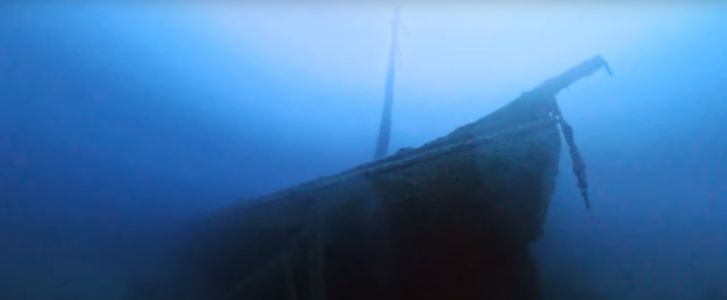 In November 1878, the wooden schooner James R. Bentley set sail from Chicago bound for Buffalo loaded with a large shipment of rye. It encountered heavy seas and gale-force winds during the voyage, struck a shoal, and sank near 40 Mile Point Lighthouse in Lake Huron just north of Rogers City. The crew was rescued. The rye sank with the schooner.
In November 1878, the wooden schooner James R. Bentley set sail from Chicago bound for Buffalo loaded with a large shipment of rye. It encountered heavy seas and gale-force winds during the voyage, struck a shoal, and sank near 40 Mile Point Lighthouse in Lake Huron just north of Rogers City. The crew was rescued. The rye sank with the schooner.
Now 146 years later, Mammoth Distilling and Michigan State University (MSU) have teamed up to bring back what has become known as Bentley rye.
On Sept. 17, two divers went 160 feet to the bottom of Lake Huron and extracted seeds from the wreck where they have rested in near-freezing water for 146 years. The seeds were put on ice and rushed to MSU where Eric Olson, an expert in wheat breeding and genetics, tried to get them to germinate.
Unfortunately, the seeds didn’t germinate, so the MSU scientists switched to Plan B. They would sequence the seed DNA.
“The seeds aren’t dead at all,” Olson told MSU Today.
Olson and his team are now extracting DNA from the seeds, allowing them to compare the DNA to modern rye varieties, determine their origin, sequence the chromosomes, and transfer them into a modern rye variety, essentially reviving this historic rye.
The goal is to use the Bentley seeds to create a new variety of rye whiskey for distillers, something that could inspire a Michigan rye trail in the vein of the Kentucky Bourbon Trail, Chad Munger, owner of Mammoth Distilling, told MSU Today.
“The Michigan Rye Trail will be more than just visiting distilleries all over the state that are making Michigan rye whiskey,” Munger told MSU Today. “We want people to know where their grain came from — and that’s proudly grown in Michigan.”
